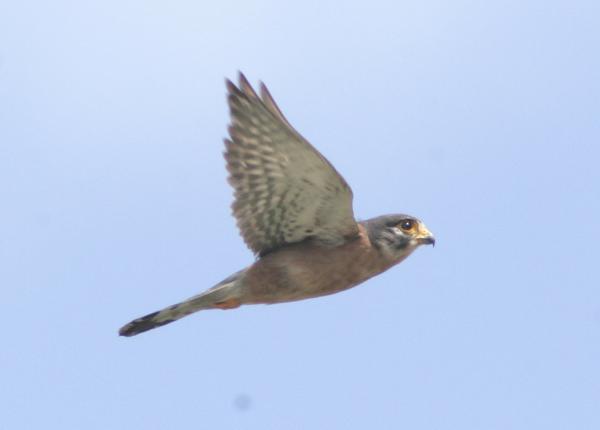Did You Know?
- The Seychelles Kestrel does not hover like some other kestrel species do.
- It is the only resident falcon on the island nation of Seychelles.
How The Peregrine Fund is Helping
Though The Peregrine Fund does not work directly with Seychelles Kestrels, our efforts in scientific research, habitat conservation, education, and community development help conserve birds of prey around the world. We also supply literature to researchers from our avian research library, which helps scientists around the world gather and share important information on raptor conservation. And, finally, our support of the Global Raptor Information Network gives raptor researchers tools to more efficiently conduct their own studies while contributing to a global program. It also provides citizen scientists a way to participate in raptor science and conservation.
Where They Live
As its name implies, the Seychelles Kestrel is found exclusively in the Seychelles, an island nation located in the Indian Ocean, northeast of Madagascar. This lovely, unmistakeable falcon can be seen hunting, flying, perching, and nesting in a number of different habitats from sea level to around 900 meters above sea level.
It can be found in forests, especially forest patches dotted with granite outcroppings, in lowlands with scattered palms, coconut plantations, urban gardens, and even villages. If you ever find yourself on the Seychelles, be sure to scan rock faces, buildings, palm fronds and tree branches, where this lovely falcon likes to perch.
Why They Need our Help
The Seychelles Kestrel is categorized as Vulnerable, which means researchers believe the future of this species is at risk. This species was once more common throughout its range, but an increase in human settlements on the Seychelles led to the destruction of native forests, which led to a decline in the kestrel population. Continued loss of habitat and habitat degradation created a more precarious situation for this kestrel. This, coupled with human persecution, and introduced cats and rats, all became threats to this species' survival. While this species is making some recoveries, many of these threats still remain.
What They Eat
The Seychelles Kestrel feeds primarily on lizards including skinks and geckos, but it will also hunt small rodents, small birds, frogs, and insects. Researchers have observed this kestrel hunting from a perch where it sits and watches for unsuspecting prey to pass by. When it does, the kestrel deftly snatches it from branches, foliage, on the ground, or on the wing.
Nests, Eggs, and Young
Like many other falcon species, the Seychelles Kestrel does not build its own nest. Instead, it lays its eggs in tree holes, in rock cavities, or even at the base of palm fronds, or on buildings.
The female will lay two to three eggs which need to be incubated for around one month. After the nestlings hatch, they will grow quickly. In just around 40 days the will be ready to fledge, or fly from the nest for the first time. When they first leave the nest, they will fly short distances, and first flights are often wobbly. But in a short time, they will be expert flyers, just like their parents. Even so, there are a lot more skills for a kestrel to learn before it can become independent. The young will stay with their parents for quite a while, sometimes up to 5 or 6 months learning how to hunt and avoid dangers.
Seychelles Kestrel and the World Center for Birds of Prey
Though The World Center for Birds of Prey is quite far from the Seychelles Kestrel's range, it is still a wonderful place to learn about birds of prey, and even other kestrel species! Come to the World Center for Birds of Prey and meet an American Kestrel up close, examine kestrel feathers at the touch table, and compare the size of a kestrel egg with that of an ostrich. If you walk the interpretive nature trail to the gazebo overlooking the Boise Valley, you are likely to see an American Kestrel hovering over the sage in search of prey or, if you are lucky, a young bird just learning to fly.
References:
Kemp, A. C. and G. M. Kirwan (2020). Seychelles Kestrel (Falco araeus), version 1.0. In Birds of the World (J. del Hoyo, A. Elliott, J. Sargatal, D. A. Christie, and E. de Juana, Editors). Cornell Lab of Ornithology, Ithaca, NY, USA. https://doi.org/10.2173/bow.seykes1.01
Global Raptor Information Network. 2022. Species account: Seychelles Kestrel Falco araeus. Downloaded from http://www.globalraptors.org on 29 Mar. 2022









